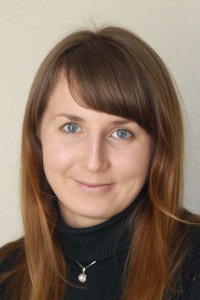Stanford Libraries Names Curator for Estonian, Baltic Studies
In 2011, Stanford Libraries announced its unusual collaboration with the Museum of Occupations in Tallinn, Estonia. It also promised that it would appoint an Estonian curator to collect and prepare exhibitions for U.S. and Estonian audiences, traveling between the small Baltic state and the United States.
Now it’s found her. LIISI EGLIT became Stanford’s assistant curator for Estonian and Baltic Studies in January. She is formerly a project manager at the National Archives of Estonia.
“In Estonia, we have a saying, ‘The one who doesn’t remember the past lives without the future,’” said Eglit. “Therefore it’s important to know, remember and learn lessons from the rich history and heritage of the Baltic states and Finland.”
She said she will be “providing material, assistance, contacts and information” about Estonia and Baltic states to interested researchers.
“My position mainly deals with four key words: occupation, resistance, freedom and recovery,” said Eglit. “It’s not only about the sad story of the Baltic states during the war and Soviet occupation. It’s also about, in the last two decades, how greatly they’ve transformed themselves.
“It’s important not only to the Baltic states, but to the other states of the world as well. There are lessons to be learned.”
Eglit’s role will be twofold: to enhance Baltic studies at Stanford, collaborating with various partners in the United States and Estonia, and to raise the visibility of the Museum of Occupations worldwide. The effort and Eglit’s position are funded by an endowment from Walter P. and Olga Ritso Kistler.
Among the top priorities on Eglit’s agenda are digitizing video testimonies from the period of Nazi and Soviet occupation that are currently being conducted in Latvia and making them available at Stanford.
She also hopes to bring several Estonian and Baltic exhibitions to the Bay Area, such as the one currently in Toronto titled “Estonians in Siberia.”
Eglit is a graduate of the University of Tartu, Faculty of Philosophy, Institute of History and Archaeology. She earned a master’s degree in Estonian history from the university, with a thesis on Estonian soldiers’ war experience during World War I. She is currently working on her PhD in the same department.
“We are delighted that Liisi comes to Stanford extremely well prepared for this exciting opportunity,” said Stanford University Librarian MICHAEL KELLER. “This new position demands someone with a deep sense of Estonia’s and the Baltics’ history as well as a range of professional skills to keep that history alive and vivid, both here and in the region.”
The former Estonian refugee, Dr. OLGA KISTLER, founded the Museum of Occupations in 2003, at the request of the Estonian government. The museum documents the three occupations of Estonia: the first Soviet occupation from 1940 to 1941, the German occupation from 1941 to 1944 and the second Soviet occupation from 1944 to 1991. Through its exhibition of thousands of items from the three occupations and a modest research program, the museum has informed tens of thousands of visitors each year of the deprivations, arrests and deportations and daily control of even minute details in the everyday lives of Estonians and others in the Baltic region.
BY CYNTHIA HAVEN, associate director of communications for Stanford University Libraries
